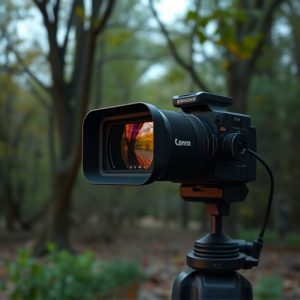RF Detector Sweep: Unmasking Hidden Cameras with Cloud Storage
RF detectors identify hidden spy cameras with cloud storage capabilities by scanning radio frequenci…….
RF detectors identify hidden spy cameras with cloud storage capabilities by scanning radio frequencies. Setting up a spy camera includes selecting a discreet device, placing it strategically, connecting to Wi-Fi, and integrating with cloud storage for secure data backup. An RF detector sweep involves structured area coverage, range adjustments, recalibration, pattern recognition, collaboration, and detail-oriented observation for accurate detection of hidden cameras.
Uncover the secrets hidden within your surroundings with our comprehensive guide on RF detector sweeps. In today’s digital age, privacy concerns are paramount, especially against covert surveillance devices like spy cameras. This tutorial equips you with the knowledge to identify and neutralize these threats. We’ll explore how RF detectors play a pivotal role in detecting hidden cameras, especially when they’re linked to cloud storage for remote access. Get ready to secure your personal space effectively.
- Understanding RF Detectors and Their Role in Detecting Hidden Cameras
- Setting Up a Spy Camera with Cloud Storage: A Step-by-Step Guide
- Techniques for Performing an Effective RF Detector Sweep
Understanding RF Detectors and Their Role in Detecting Hidden Cameras
RF (Radio Frequency) detectors are specialized tools designed to identify and locate hidden cameras, often referred to as spy cameras, which utilize wireless technology for transmission. These detectors operate by scanning through various radio frequencies, seeking signals that match known patterns associated with covert surveillance equipment. When a signal is detected, the detector alerts the user, indicating the presence of a hidden camera nearby.
In today’s digital era, spy cameras with cloud storage capabilities have become increasingly prevalent, making it crucial to understand how RF detectors work against such devices. Cloud-enabled cameras allow real-time monitoring and remote access through internet connections, posing unique challenges for detection. Advanced RF detectors can now identify these hidden threats by picking up on the distinct radio signals emitted by the camera’s data transmission process, helping users stay vigilant in a world where privacy is increasingly at risk.
Setting Up a Spy Camera with Cloud Storage: A Step-by-Step Guide
Setting up a spy camera with cloud storage is a straightforward process that allows for remote access and peace of mind. Start by selecting a high-quality, discreet spy camera equipped with Wi-Fi capabilities. Place the camera in a strategic location where it can capture the desired footage, ensuring it’s hidden from view. Once positioned, connect the camera to your home or office network using the provided instructions. After establishing a connection, access the camera’s control panel via your web browser and create an account on a reliable cloud storage platform. Integrate the cloud service with your camera, enabling automatic uploads of recorded footage. This setup ensures that even if the device is stolen or damaged, you can still retrieve your data securely stored online.
Techniques for Performing an Effective RF Detector Sweep
Performing an effective Radio Frequency (RF) detector sweep requires a systematic approach to ensure thorough coverage and accurate detection. Start by identifying potential areas where hidden cameras, equipped with RF transmission capabilities, might be located—pay close attention to corners, behind furniture, or near electrical outlets. Move methodically across the space being swept, ensuring even coverage without skipping spots. Use the detector’s range settings appropriately; for narrow spaces like desks or cabinets, reduce the range to focus on closer signals.
Regularly recalibrate the detector to account for environmental factors and interference from other devices that might affect readings. When scanning for hidden cameras with cloud storage, look for consistent data transmission patterns over time—an unusual spike in signal strength could indicate a live feed. Collaborate with someone else to double-check results, especially at blind spots or edges of the sweep area. Remember, persistent and thorough observation is key; an effective RF detector sweep isn’t just about technology but also keen observation and attention to detail.
In conclusion, detecting hidden cameras using RF detectors is a powerful tool in modern surveillance. By understanding how RF detectors work and employing effective sweep techniques, you can successfully uncover clandestine devices, such as spy cameras with cloud storage, enhancing your ability to protect privacy and maintain security. This tutorial provides practical guidance for anyone looking to master this skill, ensuring peace of mind in today’s digital age.


